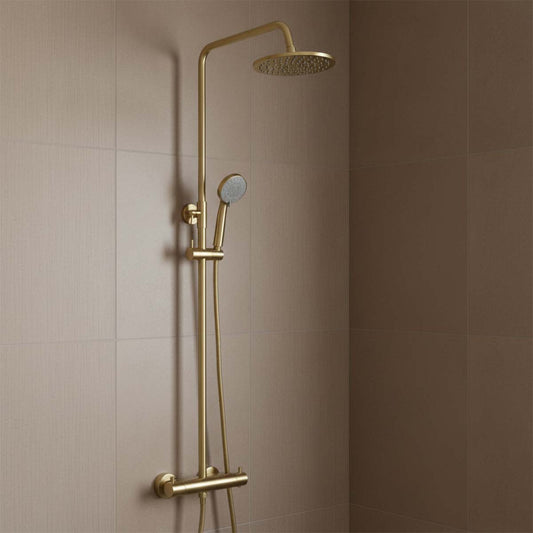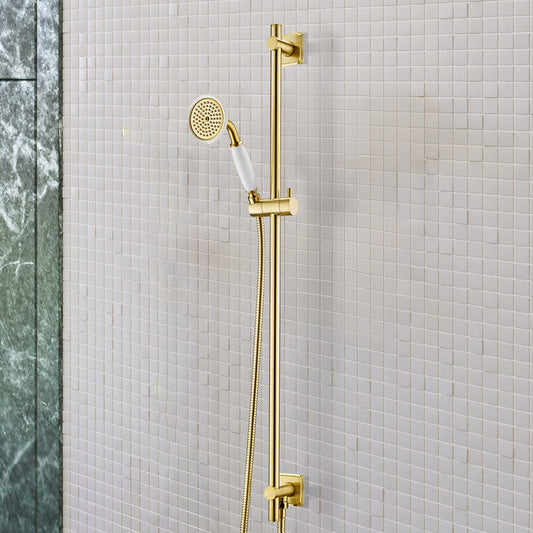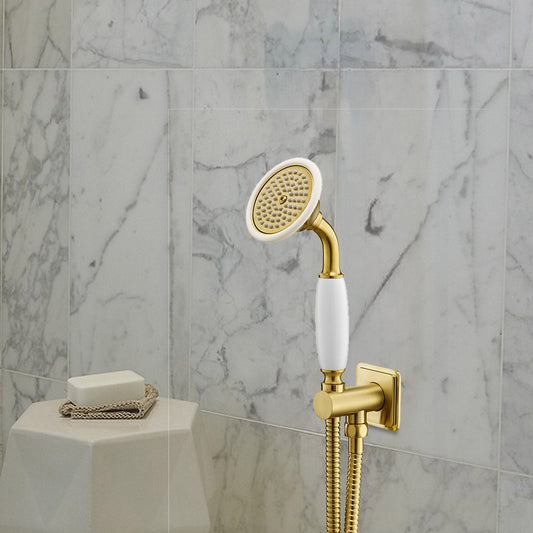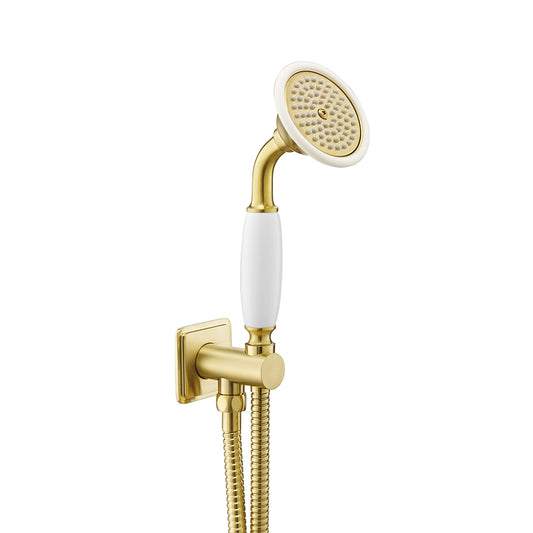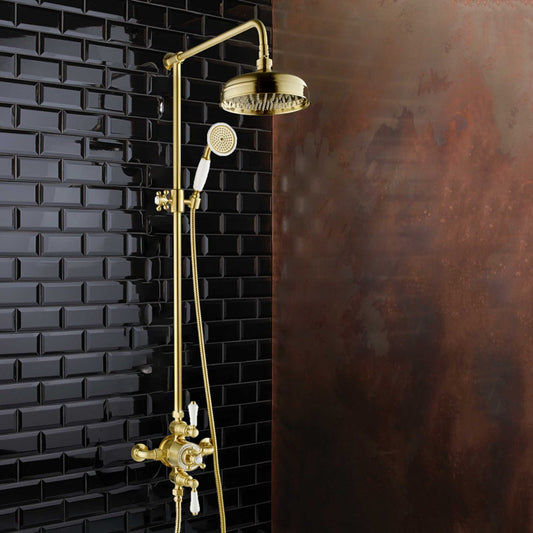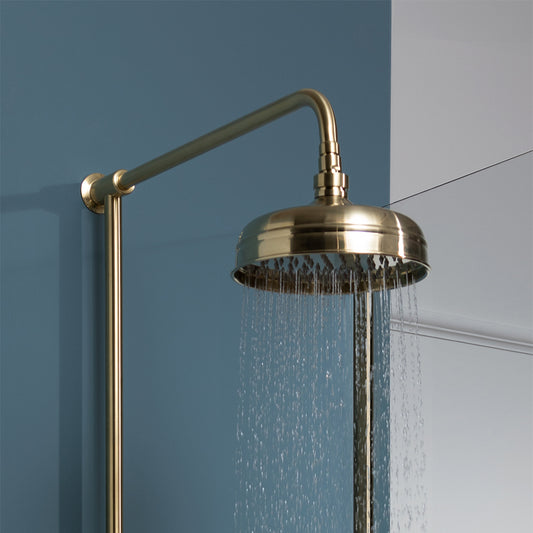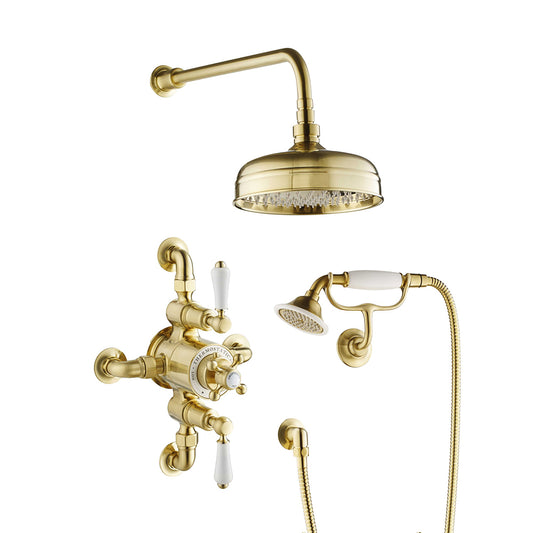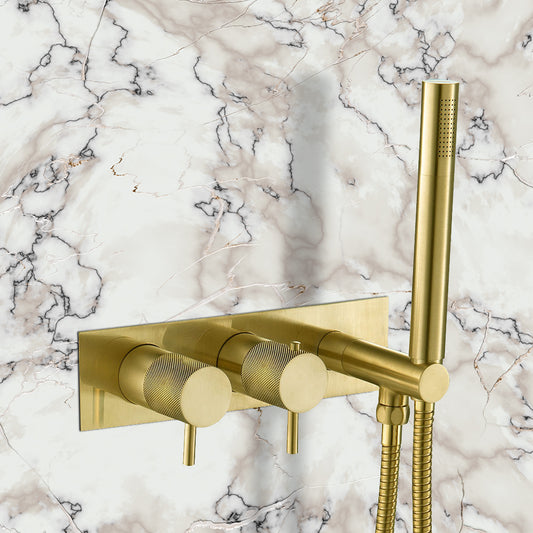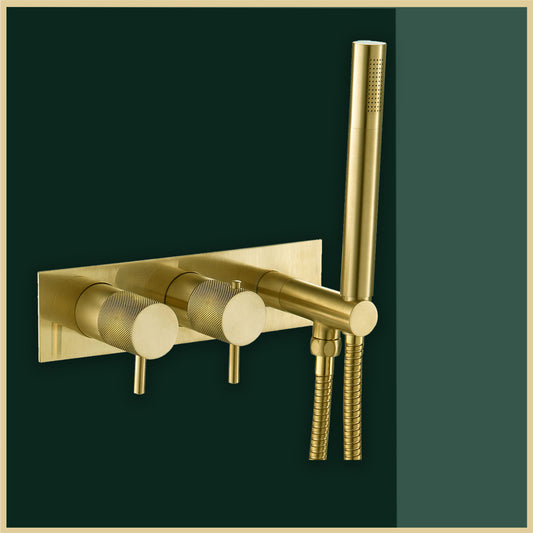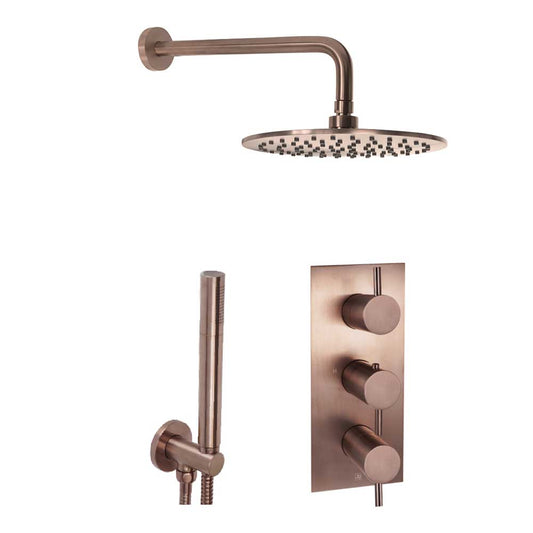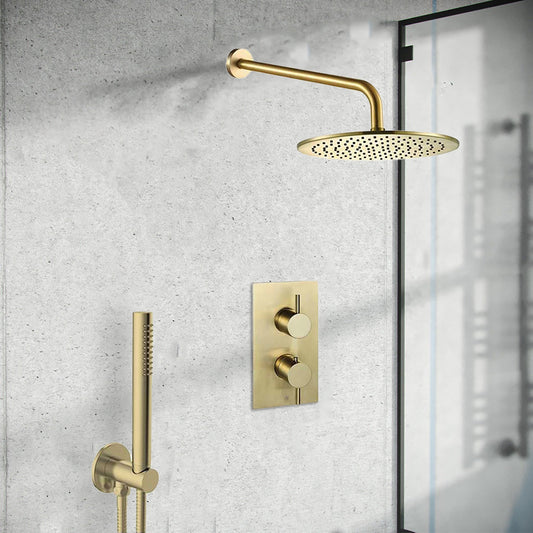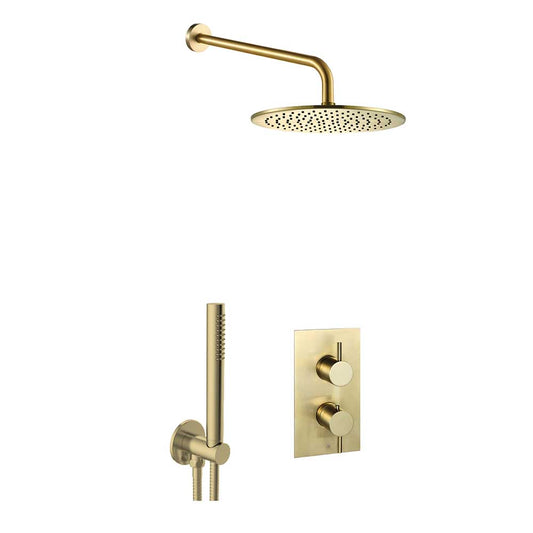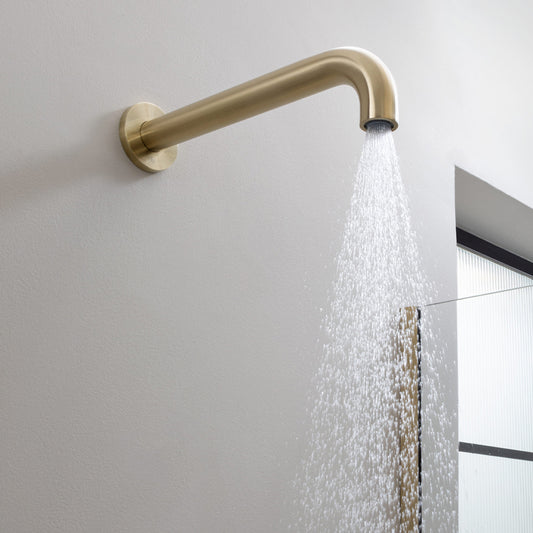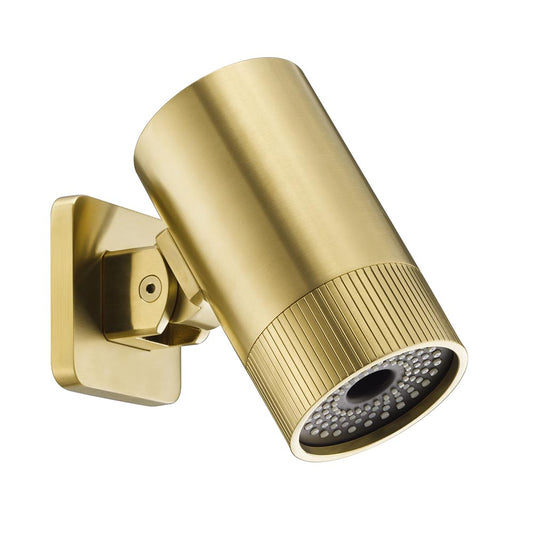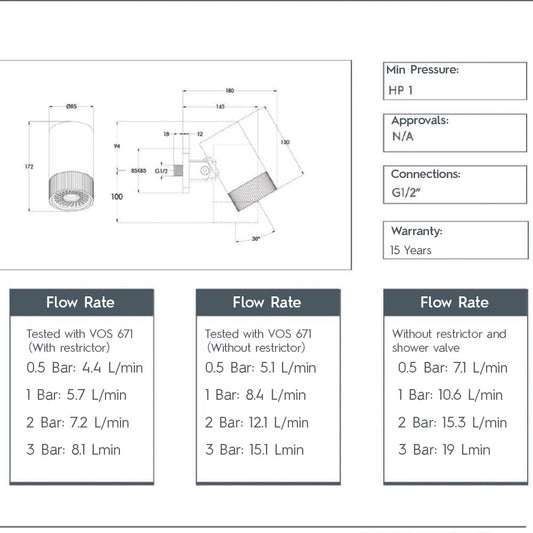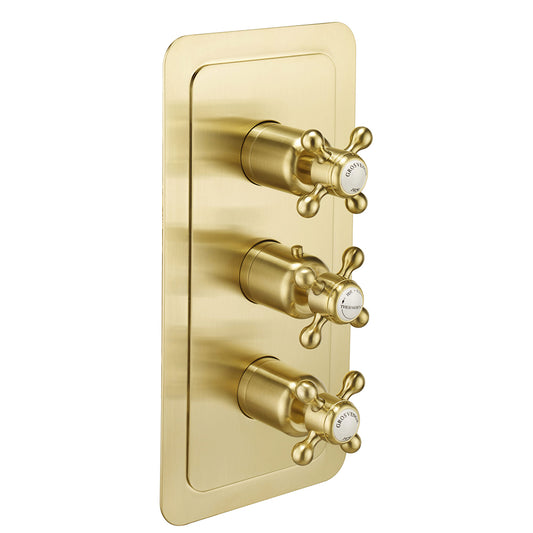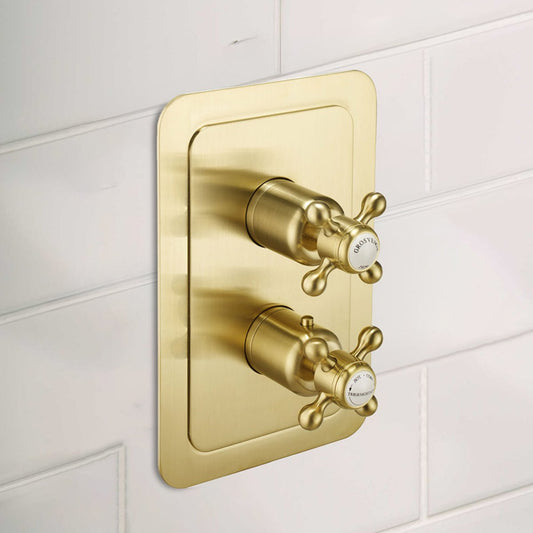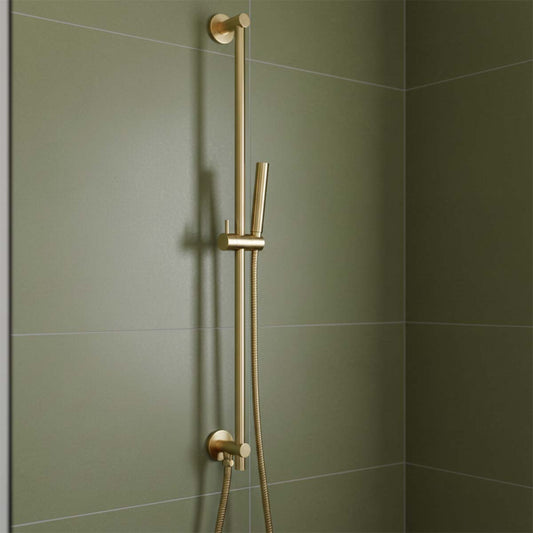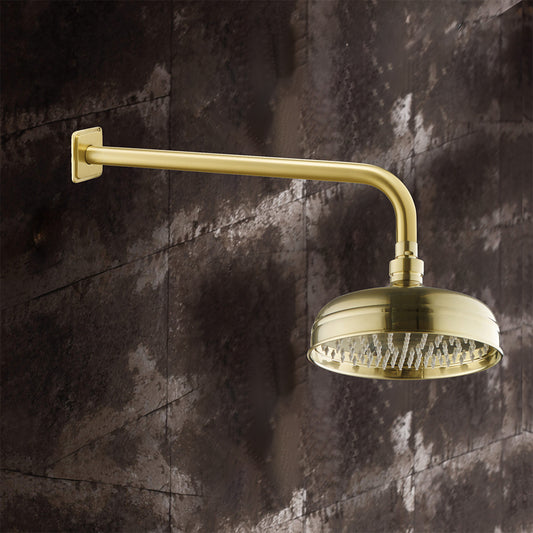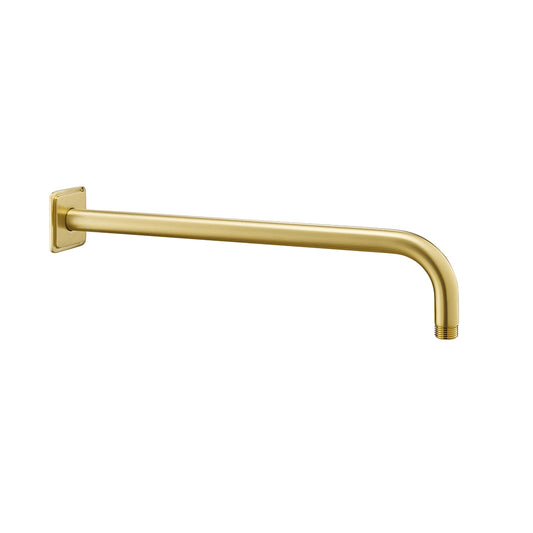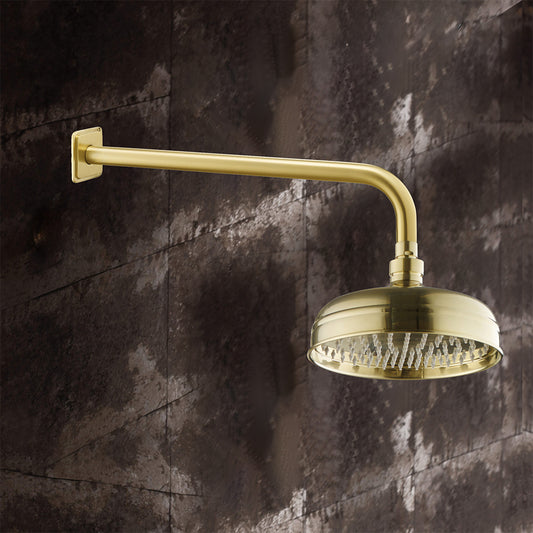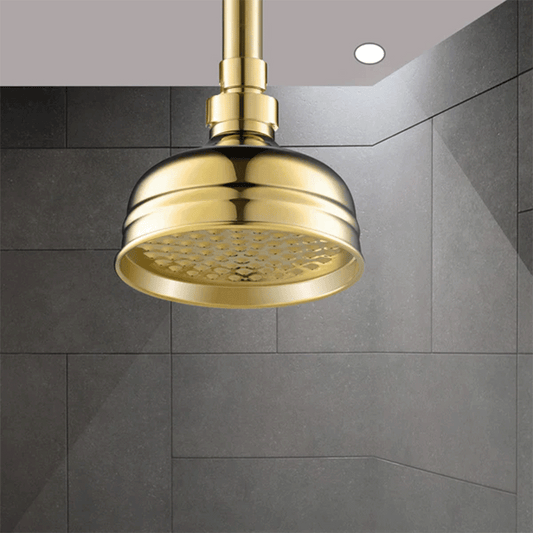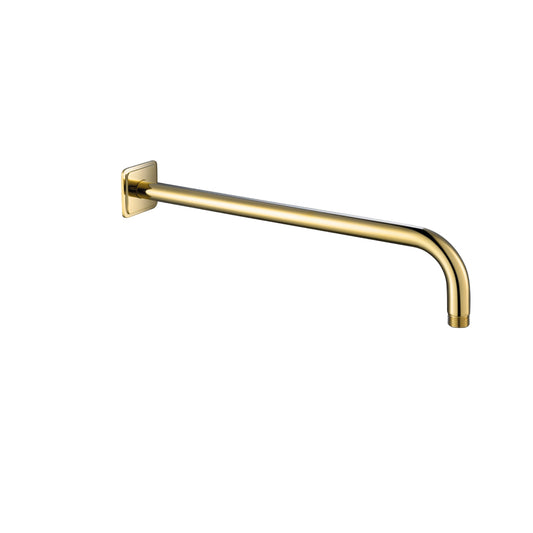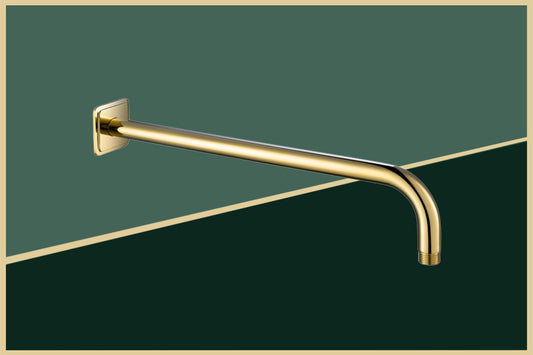The Best Ways to Clean Any Shower: A Gold Standard for Your UK Bathroom
Table Of Contents:
-
Introduction
-
Materials Needed
-
Step-by-Step Cleaning Guide
-
Cleaning Different Surfaces
-
Tackling Specific Issues
-
Conclusion
Introduction
Maintaining a clean and sparkling shower room is essential for both hygiene and the longevity of your bathroom fixtures. A clean shower not only enhances the overall look of your bathroom but also ensures that it remains free from unpleasant odors and harmful bacteria. With the right cleaning techniques and products, you can keep your shower in pristine condition. This guide covers everything from everyday maintenance to deep-cleaning strategies, providing a comprehensive approach to achieving a gold-standard clean for your bathroom.
Materials Needed
To effectively clean your shower, you'll need a combination of natural and commercial cleaning products, as well as the right tools. Essential materials include:
- Vinegar
- Baking Soda
- Dish Soap
- Hydrogen Peroxide
- Chlorine Bleach
- Scrub Brushes
- Microfiber Cloths
- Squeegees
- Grout Brush
- Plastic Bag
- Drain Snake
- Non-Abrasive Sponge
- Tile and Grout Cleaner
- Mold and Mildew Cleaner
- Toothbrush
- Shower Cleaning Spray

Step-by-Step Cleaning Guide
1. Daily Routine of Cleaning Shower:
Rinse After Use:After every shower, it’s essential to rinse the walls, floor, and any other surfaces with warm water. This simple step helps to wash away soap residues, shampoo, and body wash that can contribute to soap scum and mineral buildup. By rinsing immediately, you prevent these residues from drying and hardening on the surfaces. This not only keeps the shower cleaner but also reduces the amount of deep cleaning required later. Make sure to use warm water as it helps to dissolve soap and grime more effectively than cold water.
Use a Squeegee:
A squeegee is a valuable tool for maintaining the cleanliness of your shower. After rinsing, use the squeegee to remove excess water from glass doors, tiles, and other surfaces. This action helps to prevent the formation of water spots and streaks. The squeegee’s rubber blade is designed to effectively push water off the surface without scratching it. Regular use of the squeegee prevents soap scum and mineral deposits from forming and keeps your shower looking fresh and clear. Incorporating this step into your daily routine can significantly reduce the frequency and intensity of future cleaning tasks.
Drying:
Following the use of a squeegee, a quick wipe-down with a microfiber cloth ensures that all remaining water droplets are absorbed. Microfiber cloths are highly effective at picking up fine residues and moisture, leaving surfaces streak-free. Drying the surfaces helps to prevent water spots and the growth of mildew, which thrives in damp environments. A dry shower is less prone to mold and grime buildup, which makes your cleaning efforts more effective in the long run. Regularly drying the shower also helps to maintain the appearance and functionality of your bathroom fixtures.
2. Weekly Cleaning the Shower:
Scrub Tiles and Grout:For a thorough weekly clean, focus on scrubbing tiles and grout to remove accumulated soap scum and grime. Prepare a cleaning solution with equal parts white vinegar and water, which acts as a natural and effective cleaner. Apply the solution generously to the tiles and grout, ensuring all surfaces are covered. Let the solution sit for about 10-15 minutes to allow the vinegar’s acidity to break down the soap scum and mineral deposits. Use a scrub brush or an old toothbrush to work the solution into the grout lines and tiles, paying extra attention to areas with stubborn buildup. Rinse thoroughly with warm water to remove all residues and leave your tiles looking clean and bright.
Clean Glass Doors:Glass shower doors can easily become streaked and spotted due to soap scum and water deposits. For effective cleaning, use a solution of vinegar and water (1:1 ratio) or a commercial glass cleaner. Spray the solution onto the glass doors and let it sit for a few minutes to loosen grime. Then, use a squeegee or a microfiber cloth to wipe off the solution. The squeegee helps to remove excess moisture and prevent streaks, while the microfiber cloth buffs the glass to a shine. This method ensures that the glass remains clear and sparkling, enhancing the overall appearance of your shower.
Remove Mineral Deposits:Hard water stains can be a persistent problem in showers. To tackle these, create a paste using baking soda and water. Apply the paste to the affected areas and let it sit for 15-30 minutes. Baking soda is mildly abrasive, making it effective at lifting mineral deposits without scratching surfaces. After the paste has had time to work, scrub the area gently with a non-abrasive sponge or brush. Rinse thoroughly with warm water to remove all residues and prevent further buildup. This regular maintenance helps to keep your shower free from stubborn hard water stains and maintains its appearance.
3. Monthly Deep Clean:
Disinfect Showerheads:Over time, showerheads can accumulate mineral deposits that affect water flow and quality. To clean a showerhead, remove it from the fixture and place it in a plastic bag filled with white vinegar. Secure the bag with a rubber band and leave it overnight. Vinegar’s acidity dissolves mineral deposits, making it easier to clean the showerhead. The next day, remove the showerhead from the vinegar and use a brush to scrub any remaining deposits. Rinse the showerhead thoroughly with warm water to ensure it is free from vinegar and debris. This deep cleaning helps to restore optimal water flow and maintain the showerhead’s functionality.
Clean Drains:Shower drains can become clogged with hair and debris, leading to poor drainage. Use a drain snake or auger to remove blockages from the drain. Insert the snake into the drain and twist to capture and remove debris. For an additional deep clean, pour a mixture of baking soda and vinegar down the drain, followed by hot water. The baking soda and vinegar react to break down organic matter and eliminate odors. This routine ensures that the drain remains clear and functions properly, preventing unpleasant odors and potential water damage.
Cleaning Different Surfaces
How to Clean a Shower Made of Fiberglass:
Fiberglass showers are prized for their durability and ease of maintenance, but they still require regular care to keep them looking their best. To clean a fiberglass shower, start by mixing equal parts of white vinegar and water in a spray bottle. Apply this solution generously to the fiberglass surface, focusing on areas with soap scum and grime buildup. Use a soft-bristled brush or non-abrasive sponge to gently scrub the surface, taking care not to scratch it. Rinse thoroughly with warm water to remove any residue. For a deeper clean, you can use a specialized fiberglass cleaner, which is formulated to remove stubborn stains without damaging the finish.
To maintain the shine and protect the surface, consider applying a light coat of car wax or a fiberglass polish after cleaning. This not only helps to restore the glossy appearance but also adds a layer of protection against future grime buildup. Regular maintenance is key to preventing soap scum from hardening and making cleaning more difficult. By keeping up with a consistent cleaning routine, you ensure that your fiberglass shower remains in top condition and retains its smooth, sleek appearance.
How to Clean a Shower Made of Tile:
Tile showers, with their grout lines and varied surfaces, can present more cleaning challenges. Start by creating a cleaning paste from equal parts baking soda and white vinegar. Apply this paste to the tiles and grout lines using a sponge or brush, focusing on areas with soap scum, mildew, or other buildup. Allow the paste to sit for about 10-15 minutes before scrubbing gently to lift the grime. For persistent stains or mold, a diluted bleach solution can be effective—mix one part bleach with three parts water and apply it to the affected areas. Ensure proper ventilation and rinse thoroughly to remove any bleach residue.
To maintain the tiles and grout, it’s crucial to clean and seal the grout lines regularly. Grout sealer helps protect against moisture and staining, extending the life of your grout and making future cleaning easier. Regular cleaning with a mild tile cleaner and periodic resealing of grout lines will keep your tile shower looking fresh and prevent the accumulation of dirt and grime. Keeping the grout clean not only enhances the appearance but also helps to avoid potential mold and mildew problems.
How to Clean a Shower Made of Stone:
Stone showers, such as those made from marble or granite, require a gentle approach to preserve their natural beauty and finish. Begin by using a mild, pH-balanced soap and warm water for cleaning. Apply the soapy water with a soft cloth or sponge, gently scrubbing the surface to remove dirt and grime. Avoid using acidic or abrasive cleaners, as they can damage the stone and strip away its protective sealant. After cleaning, rinse the stone thoroughly with clean water to ensure no soap residue remains, which can dull the stone’s finish.
To maintain the stone’s appearance and durability, it’s important to reseal the stone surface regularly—typically every six months to a year, depending on usage. Stone sealants protect against moisture and staining, helping to preserve the stone’s natural color and texture. Additionally, promptly cleaning up spills and avoiding harsh chemicals will contribute to the longevity and aesthetic appeal of your stone shower.
How to Clean Shower Doors:
Shower doors can quickly become covered in soap scum and water spots, which can be easily managed with a simple cleaning routine. Start by mixing equal parts white vinegar and water in a spray bottle. Spray the solution generously onto the glass doors, focusing on areas with buildup. Allow the solution to sit for a few minutes to dissolve the soap scum and water spots. Use a microfiber cloth or a non-abrasive sponge to wipe away the grime, then rinse the doors with clean water to remove any remaining residue.
For additional shine and to prevent future buildup, consider applying a water repellent treatment such as Rain-X to the glass doors. This product helps to repel water and reduce the formation of spots and streaks. Regular cleaning with a squeegee after each shower can also help to minimize soap scum and water spots, making your routine cleaning tasks easier and keeping your shower doors looking clear and sparkling.

How to Clean a Showerhead:
Over time, showerheads can accumulate mineral deposits that affect water flow. To clean your showerhead effectively, start by preparing a solution of equal parts white vinegar and water. Place this solution in a plastic bag and secure it around the showerhead with a rubber band, ensuring that the nozzles are submerged. Allow the showerhead to soak in the vinegar solution for several hours or overnight, which will help to dissolve the mineral deposits. After soaking, remove the bag and run the shower for a few minutes to flush out any loosened debris.
For persistent blockages or buildup, use a soft brush to gently scrub the nozzles and remove any remaining deposits. This routine cleaning helps to restore optimal water flow and prevent clogs that can affect the performance of your showerhead. Regular maintenance ensures that your showerhead remains in good working condition and provides a consistent and enjoyable shower experience.
How to Clean a Shower Drain:
Shower drains are prone to collecting hair and debris, which can lead to clogs and slow drainage. To clean the drain, start by removing the drain cover and using a drain snake or a similar tool to extract any trapped hair or gunk. After clearing out the visible debris, pour a mixture of baking soda and vinegar down the drain. Allow the mixture to sit for 15-20 minutes, then follow up with hot water to help dissolve any remaining buildup and flush it away.
Regular cleaning and maintenance of the shower drain are essential to prevent blockages and maintain efficient drainage. Periodically checking and cleaning the drain will help to reduce unpleasant odors and ensure that water flows freely. By keeping the drain clear and addressing issues promptly, you can avoid more serious plumbing problems and maintain a clean and functional shower.
How to Clean Shower Curtains and Liners:
Shower curtains and liners can become breeding grounds for mold and mildew, especially in a damp environment. For fabric shower curtains, machine wash them on a gentle cycle with warm water and mild detergent. Adding a cup of white vinegar to the wash can help eliminate mold and mildew and brighten the fabric. After washing, hang the curtain to dry thoroughly to prevent mold growth from returning.
For vinyl or plastic liners, wipe them down with a mixture of water and baking soda or a mild all-purpose cleaner. Use a sponge or cloth to scrub away any mold or mildew spots, then rinse thoroughly and allow the liner to air dry. Regular cleaning and proper ventilation in the bathroom are key to keeping your shower curtains and liners fresh and free from mold.
Tackling Specific Issues
1. Soap Scum:
Cleaning Solution:
Soap scum can build up on various surfaces in the shower, making them look dingy and unclean. To tackle soap scum, use a mixture of white vinegar and dish soap. Combine equal parts vinegar and dish soap in a spray bottle and apply the solution to the affected areas. Allow the solution to sit for 10-15 minutes to break down the soap scum. After the waiting period, use a brush or sponge to scrub the surfaces, focusing on areas with heavy buildup. Rinse thoroughly with warm water to remove all residues. Regular use of this solution helps to keep soap scum under control and maintain a clean shower.
Preventive Measure:
To minimize soap scum buildup, make it a habit to wipe down surfaces with a squeegee or damp cloth after each use. This simple routine prevents soap residues from drying and hardening, which can lead to scum formation. Additionally, consider using a daily shower spray designed to prevent soap scum and mineral deposits. These sprays can help to keep surfaces clean and reduce the need for intensive cleaning.
2. Mold and Mildew:
Hydrogen Peroxide:
Mold and mildew growth in the shower can be effectively treated with hydrogen peroxide. Spray hydrogen peroxide directly onto the affected areas and let it sit for about 10 minutes. Hydrogen peroxide acts as an antifungal agent, killing mold spores and cleaning mildew. After the waiting period, scrub the area with a brush to remove the mold and mildew. Rinse thoroughly with clean water and ensure the area is completely dry to prevent regrowth. Regular treatment with hydrogen peroxide helps to keep mold and mildew at bay and maintain a clean shower environment.
Chlorine Bleach:
For more severe mold and mildew infestations, a diluted bleach solution can be highly effective. Mix one cup of bleach with one gallon of water and apply the solution to the affected areas. Let it sit for about 10 minutes to allow the bleach to kill the mold and mildew. Scrub the area with a brush to remove the mold, then rinse thoroughly with water. Ensure proper ventilation during the cleaning process and wear gloves to protect your skin from the bleach. Regular use of bleach helps to manage and prevent mold and mildew growth.
3. Hard Water Stains:
Vinegar Soak:
Hard water stains can be particularly stubborn and challenging to remove. To address these stains, soak a cloth or sponge in white vinegar and apply it to the stained areas. Vinegar’s acidity helps to dissolve mineral deposits that cause hard water stains. Allow the vinegar to sit on the stains for 30 minutes to an hour, then scrub the area with a brush or sponge. Rinse thoroughly with warm water to remove all residues and prevent further buildup. Regular use of vinegar can help to keep hard water stains under control and maintain a clean shower.

Baking Soda Paste:
For tougher hard water stains, a baking soda paste can be highly effective. Mix baking soda with water to create a thick paste and apply it to the stains. Let the paste sit for 15-30 minutes to allow it to work on the stains. The mild abrasiveness of baking soda helps to lift the stains without damaging the surface. After the paste has had time to work, scrub the area gently with a non-abrasive sponge or brush, then rinse with warm water. This method helps to remove stubborn hard water stains and maintain the appearance of your shower.
Conclusion
Maintaining a clean shower is crucial for both hygiene and aesthetics, and following the steps outlined in this guide will ensure your shower remains in excellent condition. By incorporating regular routines, such as daily rinsing and weekly scrubs, alongside periodic deep cleans, you can effectively tackle issues like soap scum, mold, and hard water stains. Tailoring your cleaning approach to the specific materials of your shower—whether fiberglass, tile, stone, or glass—ensures optimal results and prolongs the lifespan of your fixtures. With these practices, you'll not only enhance the functionality and appearance of your shower but also contribute to a more comfortable and inviting bathroom environment.
Explore Our Shower Collection here
Other Related Blogs:







